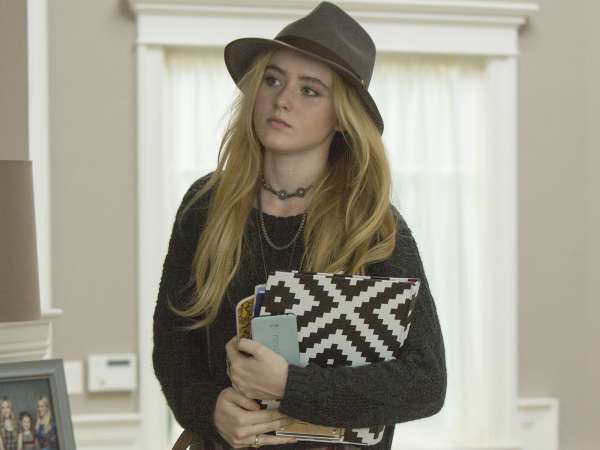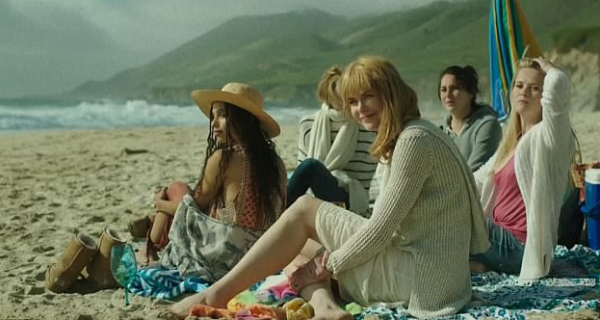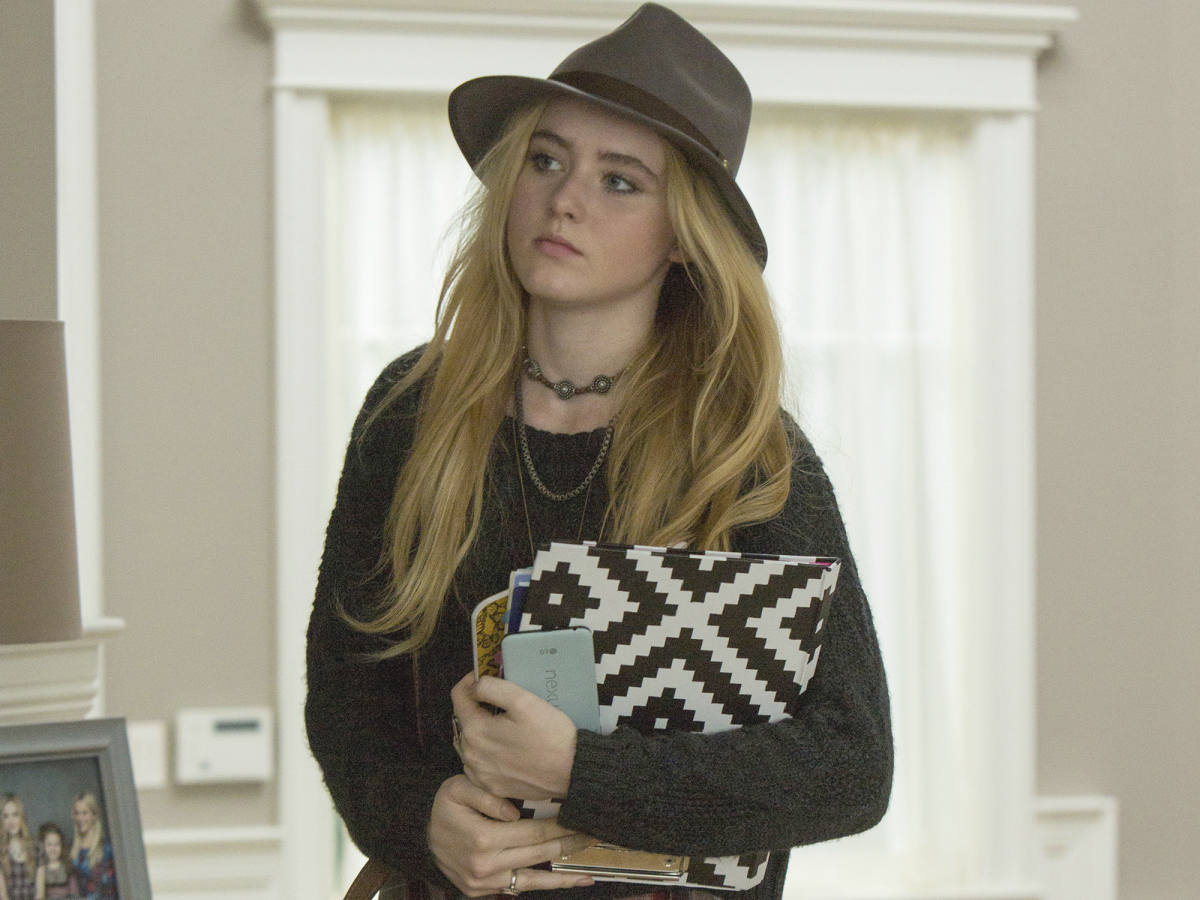
[Content warning: this piece includes general discussion of rape and domestic violence.]
Maybe every rich little white girl should auction off her virginity in support of Amnesty International, the way Abigail Carlson (Kathryn Newton), teenage daughter of HBO’s Big Little Lies protagonist Madeline Mackenzie, proposes to do.
Abigail’s plot line gained little more than an eye-roll in popular analysis lauding the mini-series as a vision of female solidarity telling a vital story about abuse. Initially, I would tend to agree that Abigail’s pursuit of justice for child sex slaves is nothing more than a pulpy side-line trotted out for shock value. After all, Big Little Lies is famed prime time soap opera producer David E. Kelley’s project. And, as the perennially popular Law & Order: SVU franchise demonstrates, narratives exploiting child sex trafficking victims are reliable fodder for ratings.
But Big Little Lies deserves a more subtle read. Everything about it is meticulously intentional, from the melancholy pop soundtrack to the pristine landscape of the surf, suggesting sinister undercurrents to all that is pretty on the surface of the idyllic Monterrey community setting. The show was adapted from a book of the same name by Liane Moriarty published in 2014. Kelley was necessarily selective about which elements from the 460-page novel made it to television. Notably, Bonnie Carlson’s backstory 1 was not included in the series, nor was there a broader exploration of her character development as there was in the book. Her identity was also changed from a white woman in the novel to a Black woman in the series—the only significant Black character in the series—and the setting was relocated from Australia in the book to the upper-class U.S. coastal community of Monterey on-screen. Rather than treating these as auteurial afterthoughts, these changes are better understood as instrumental choices in adapting the central point of the work for television.
[Spoilers after the jump]
Perhaps the story originally presented in the novel is one of women coming together—not having read it, I can’t speak to that. But the televised American version tells a more cynical tale, one about how white bourgeoisie silence nurtures and perpetuates violence, pushing it underground where it thrives in secret. Celeste (Nicole Kidman) suffers to the point of near death and then establishes a clandestine escape route from her abusive marriage alone rather than confide in her suburban clique, composed of Madeline (Reese Witherspoon) and Jane (Shailene Woodley). Jane nearly murders an innocent person in her solitary pursuit of the man who raped her, the biological father of her child Ziggy (Ian Armitage), only to discover upon witnessing his beating of Celeste at the finale’s fundraising event that her rapist was, in fact, Celeste’s husband Perry (Alexander Skarsgård). Despite his close social proximity to Jane, Perry was able to evade her finding him for months because of the secrecy that both Celeste and Jane maintained around their abuse. Celeste never introduced Jane to Perry, nor did she ever recognize her husband as Jane’s abuser, because neither women felt safe enough sharing their abuse with each other to make his identity known. It’s only when Perry exposes himself by attacking Celeste in public view that the dots connect for them. Not coincidentally, the only woman to take effective action stopping the assault is Bonnie, the sole woman of color character, coming to the rescue of the same women who consistently shunned and excluded her from their white-bread community.
Despite the deceptive presence of a dead rapist and a serene beach outing at the end of Big Little Lies, there is no happily-ever-after in this story. The finale renders both Jane and Celeste’s children fatherless and all the women burdened with the trauma of the murder. In the wake of the killing, there is no plan to acknowledge the abuse as individuals or as a community. Instead, there is a pact maintaining the lies that made the abuse possible in the first place. It seems doubtful that Ziggy or Celeste’s twins will receive the gentle and honest care they need to heal from the harm done to them, though all of the children were exhibiting problematic behaviors related to the abuse even before the death of their father.
The world that Kelley creates here is one that values the appearance of innocence more than it does an authentic accountability process around guilt. In this world, Abby’s attempt at speaking out and making sexual violence visible is decidedly unwelcome. It’s unsurprising that Madeline dissuades her daughter from it by referencing her own preference for dishonesty with the inappropriate parental confession that she cheated on her husband. These are the insidious ways that we teach our girls to maintain a lie about the existence of abuse that chokes survivors of violence like Celeste quiet and enables abusers like Perry toward fatal consequences. Although this fiction ends in the death of the abuser, in real life, gender-based violence is a leading cause of death among women. In real life, Celeste would end up dead—possibly Jane and the children too.

Madeline Mackenzie is more invested in her daughter as a symbol of white virginity than she is in the life-or-death circumstances of the sex slaves that Abby misguidedly attempts to save with her project. Just as she is more invested in the superficial perfection of Celeste’s marriage than she is in investigating the troubling signs of abuse her friend exhibits, and just as she is more invested in her narcissistic ploys to use Jane as a social proxy between her and her nemesis Renata (Laura Dern) than she is in providing real support for her that might include a suggestion to pursue therapy or some other means of healing from her rape. Abby’s unsuccessful attempt at raising a conversation on violence is an allegory for the community in Big Little Lies and so many other communities dominated by white patriarchal violence that maintains white girls as virgins and girls of color as victims within a culture of lies.
Sure, it is desperate and vain peak white feminism for teenagers like Abby to see themselves as saviors of child sex slaves. And it’s tired for white Americans to raise money for bloated and over-funded NGOs like Amnesty International, even if the organization did recently adopt a position in support of the full decriminalization of prostitution at the urging of grassroots sex worker rights advocates, making Amnesty at least a bit more likely than other huge human rights organizations to actually help child trafficking survivors rather than funneling the money into arresting adult sex workers. But maybe in the white bourgie Big Little Lies worlds where even the best of friends can’t break their silences, the most we can hope for is a white girl auctioning off her virginity to say something about what lies beneath the tranquility of the tide.
1. Although Liane Moriarty, the author of the novel the series is based on, recently teased a look at Bonnie’s past on a potential season two of Big Little Lies in an interview with the Sydney Morning Herald. ↩

Very thorough critique of the show!
I love this website.
It’s interesting in the book (which has a lot more tongue in cheek humour than the show), Abigail is often mocked by he author for her efforts. For example, on her auction site she misspells ‘privilege’ and plagiarises copy from Amnesty’s website without their consent, and lines about it include “but you’re not raising awareness! You’re raising awareness of yourself!” and “the egocentricity of the child, as if international organisations were sitting around twiddling their thumbs while little Abigail Mackenzie on the Pirriwee Peninsula was the only one taking decisive action.” (Of course I’d add or change it to sex worker organisations…)
Anyway I think a bit of the humour around her crusade was lost in the show.
No one asks Abigail the conditions of her auction, because any sane adult knows that a child auctioning off their virginity is absurd and are not going to entertain it. A better question is, why did no one send her to a therapist after this obvious cry for attention?